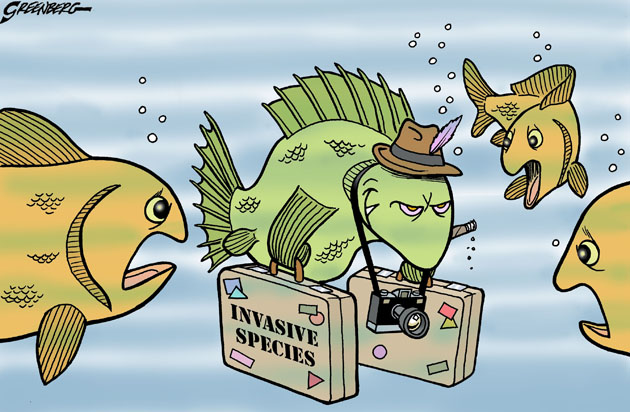In this joyful season, and of course with that I mean the summertime, most of us will travel.
Set aside the carbon footprint that we may cause which such kind of reckless choice, there may be other more or less terrible consequences. We talked about that in our previous article.
One of them concerns the ecological state of a biota.
Indeed, when we travel we could be entering a different biota (which literally means the whole set of living beings in a given region) especially when we go far.
Because of that, we become in contact with things we are not usually used to. And that is the reason why often we need to integrate our feeding: some new bacterias may interact with those in out stomach and cause disorders, for example.
This could be an exact metaphore to what happens in ecosystems when we, travelling, willingly or unknowingly, are carrying alien species to some parts of the world.
They interact in more or less in unpredictable manners with the local species, causing as well more or less irreversible effects.
IUCN estimates that between 5-20% of IAS become dangerous to the hosting ecosystem. And such a percentage builds up to be, instead, one of the major threats to biodiversity.
And the problem is that as we travel more and more and our globe is becoming increasingly integrated, the trend is not going to stop: between 1970 and 2007 Europe has experienced a steep increase of more than 70%.
examples of invasive species that actually became nuisances are for example:
– the asian tiger mosquito. Scientists believe that this annoying (at least to human beings) insect is one of the most spread in the world, since it has been found in more than 28 countries outside its native ecosystem.
-the asian lonhorned beetle. Also in italy it has been fought, since at the larval stage it literally is able to destroy layer by layer all the trees present in a forest.
Almost every country in the world the world has taken part in the fight to this phenomenon signing the Convention on Biological Diversity Strategic Plan for Biodiversity in 2010.
You can read more on the IUCN website, here: https://www.iucn.org/theme/species/our-work/invasive-species.
However it is also true that invasive species soemtimes enhance the biodiversity of an ecosystem.
An interesting article that describes this phenomenon is to be found here: https://www.wired.com/2011/02/good-invasives/
Moreover, results of a research about this topic are soon to be published by a Spanish reseach institute.
Lets wait and see!



